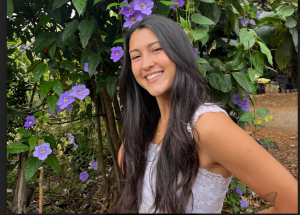
Bills to halve and split funds for public art were discarded this legislative session.
After rebuffing two simultaneous threats to public-art funding, local artists and art supporters now have flipped the legislative momentum. Instead of potentially suffering major cuts this session, they have become positioned to receive a financial boost.

would have given more funds to performing artists at the expense of visual artists by overhauling how artists can tap into a state art fund. In the latest draft, though, that splitting approach has been changed into a one-time special boost of $1 million specifically designated for musicians, dancers, actors, and others, who specialize in ephemeral artwork.
“It ultimately opens up more opportunities to support performing arts and do things that probably haven’t been done before,鈥� Senate Transportation and Culture and the Arts Chairman Chris Lee said.
Hawaii鈥檚 historic , the first state-wide program of its kind in the nation, traditionally has been reserved for supporting only visual artists, such as painters, photographers, sculptors, and others, who create durable and static pieces, which ultimately get displayed in public places. In this program, 1 percent of all state-fund appropriations for capital improvements, such as building construction projects, must be used on public art.

That meant $5.6 million was used through the Work of Art Special Fund for public art via this program last year, according to the
Those efforts included an increased acquisition of works of art by Native Hawaiian artists, increasing and diversifying the Teaching Artist Roster and partnering with community organizations to develop an augmented reality experience integrating works of art, culture, and history.
But performing artists have had no similar and reliable funding mechanism for their work.
Recurring concerns about how performing arts would be 鈥渄isplayed,鈥� in the current Percent for Art program have dogged its expansion into such activities as the 鈥減osting of a recording of works of art at presentation sites maintained by the foundation or the state art museum for public view and listening,鈥� according to the bill.聽
During public testimony on SB 119, performing arts supporter Paul James Brown countered that 鈥淵ou do not get the sense of a performance when you look at an archival shot.鈥�
Local dance coach and UH Manoa dancer, Leilani Contreras Del Toro, in her testimony said that there seems to be an 鈥渦pper hand鈥� for visual artists with state funding, due to the timeless aspects of their work, while artists working in ephemeral mediums, are not given similar backing in the state.
鈥淚t won’t be enough until there’s equity between all the arts,鈥� Contreras Del Toro said.
Debra Drexler, chair of the University of Hawaii鈥檚 Department of Art, said, there are 鈥渟o many different generations of artists who are all doing strong, amazing work who deserve recognition from the legislature in support of their art.鈥� Developing local artists, she added, can mean fostering future 鈥渢reasures of the state.鈥�
In a public hearing on Feb. 14, Sen. Chris Lee, chair of the Committee on Transportation and Culture and the Arts, said discussions of the Percent for Art program this legislative session made it clear that the state needs more funding for artistic endeavors, not less.
had been proposed to cut the Percent for Art program in half, but the public response to it last month, Lee said, was 鈥渙verwhelming testimony and opposition.鈥� The other related bill this session, at first proposed a 60-40 split between visual artists and performing artists in the current Percent for Art system, which meant a huge loss of support for visual artists in the state.
鈥淚 don鈥檛 think it鈥檚 anyone’s intention to deprive anyone of an opportunity to engage in the arts,鈥� Lee said during a recent legislative hearing.
SB 119 needs to clear a hearing in the Senate Ways and Means Committee by Friday or it will likely be dead for the session.
 Sign up for our FREE morning newsletter and face each day more informed.
Sign up for our FREE morning newsletter and face each day more informed.
We need your help.
Unfortunately, being named a聽finalist for a聽Pulitzer prize聽doesn’t make us immune to financial pressures. The fact is,聽our revenue hasn鈥檛 kept pace with our need to grow,听.
Civil Beat is a nonprofit, reader-supported newsroom based in 贬补飞补颈驶颈. We鈥檙e looking to build a more resilient, diverse and deeply impactful media landscape, and聽we hope you鈥檒l help by .

